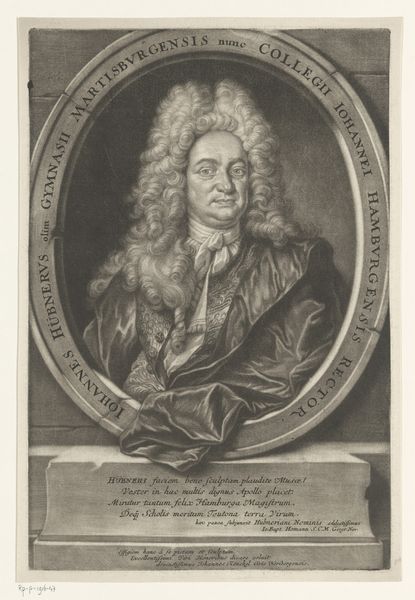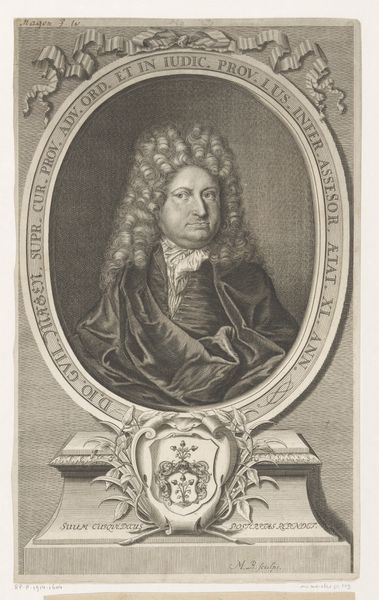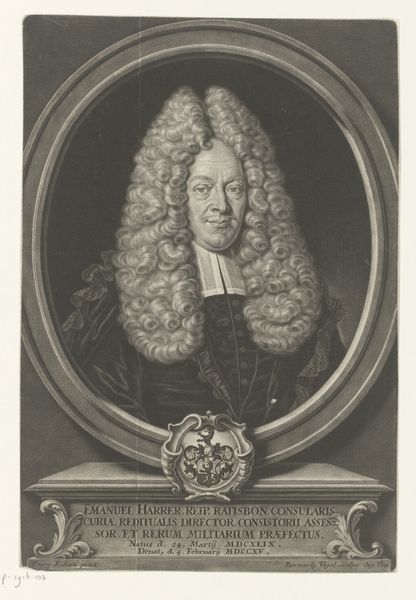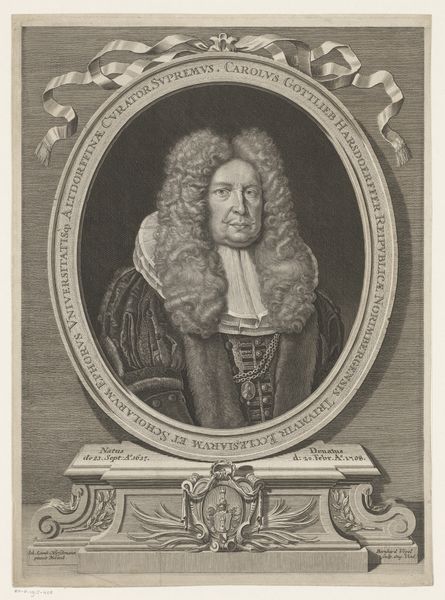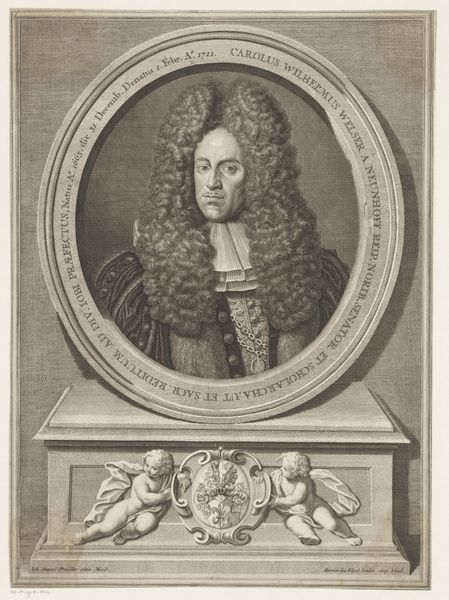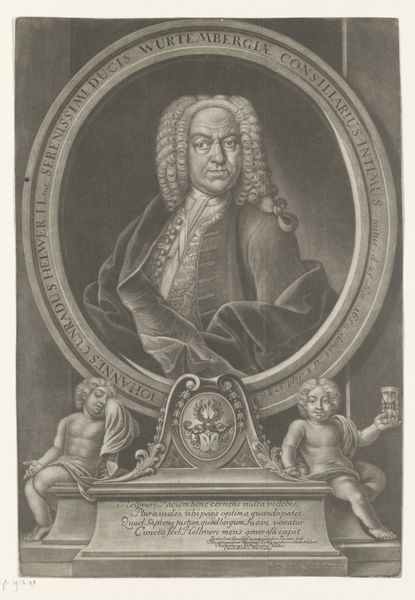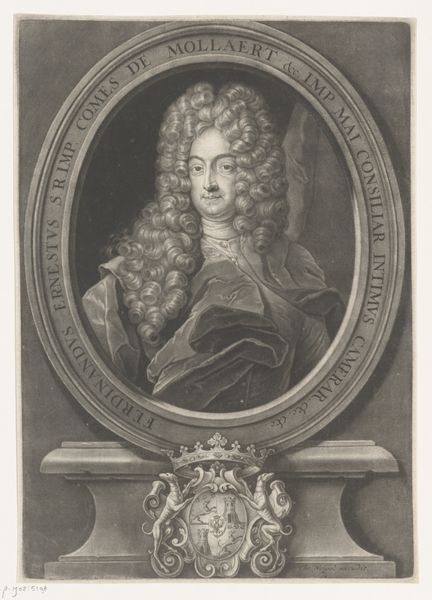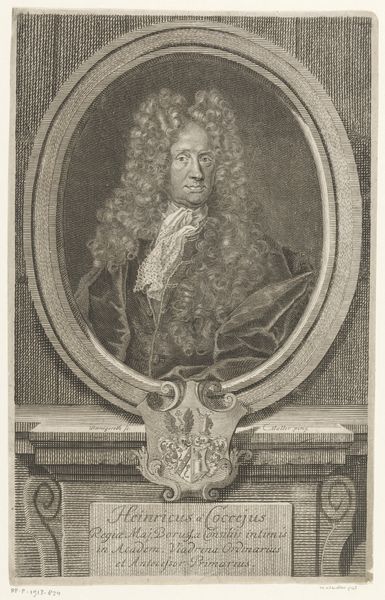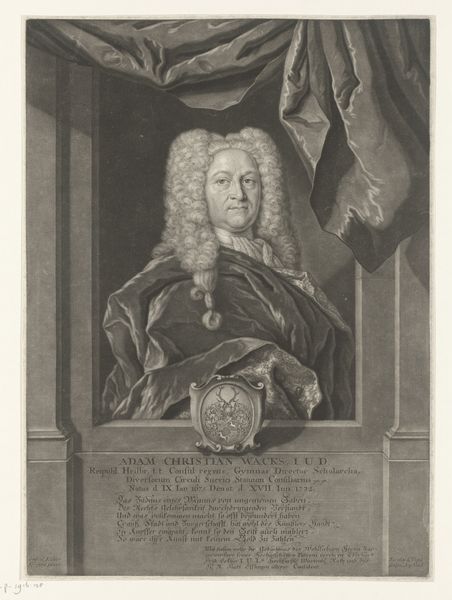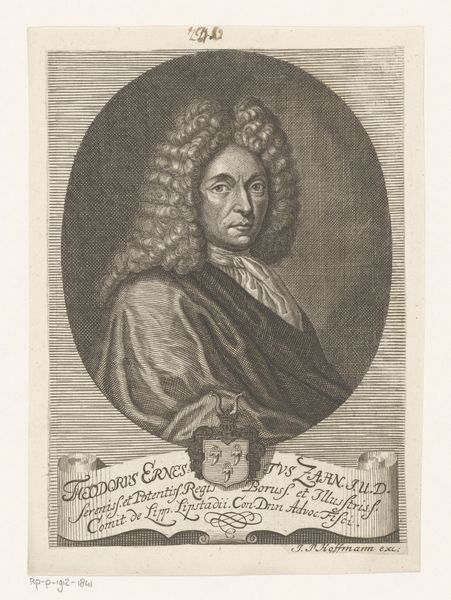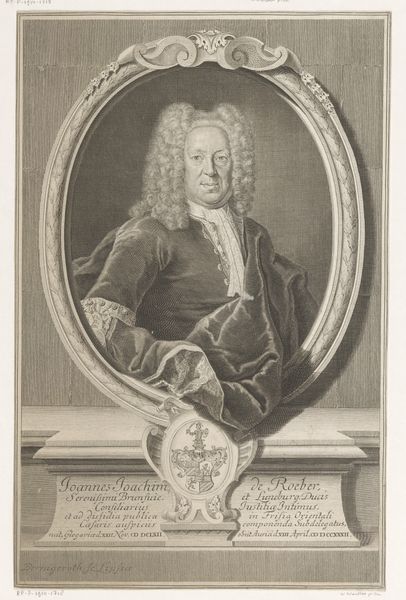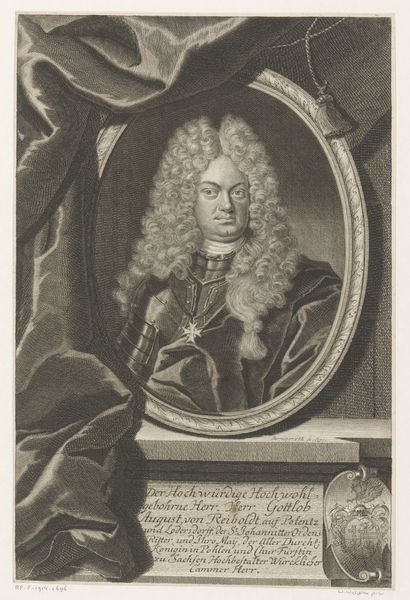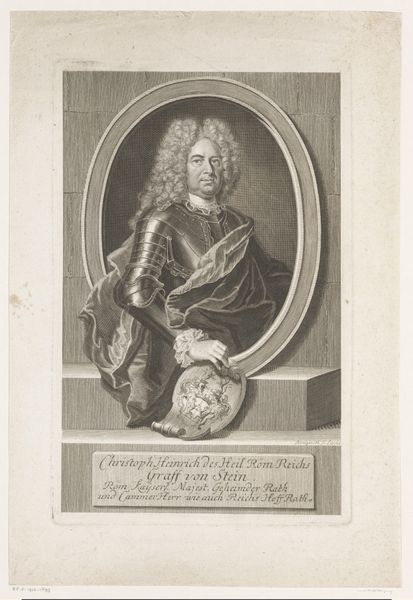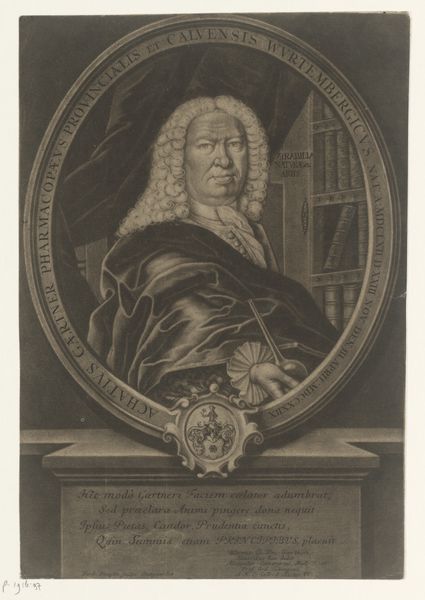
print, etching, engraving
#
portrait
#
baroque
# print
#
etching
#
caricature
#
portrait drawing
#
history-painting
#
engraving
Dimensions: height 325 mm, width 214 mm
Copyright: Rijks Museum: Open Domain
Curator: Before us, we have a portrait of Johann Sebastian Christ, executed as an etching by Johann Kenckel around 1728. It's housed right here at the Rijksmuseum. Editor: Whoa. The first thing that strikes me is all the frills! The hair, the lace – it's a bit much, right? Is this some sort of playful critique? It’s giving caricature almost, don’t you think? Curator: It's certainly a stylized representation, typical of Baroque portraiture. What might appear to us as excessive ornamentation actually serves a specific purpose in the image's construction. Note the artist's approach to line and the balance between dark and light; how that intricate detailing in the hair creates volume and texture that directs our gaze to the face. Editor: Yeah, but that face seems so…serious! It's like he's daring you to laugh at the wig. Curator: The formality underscores his status, his self-possession. The artist strategically positions the text inscription below the oval frame, emphasizing Christ’s various roles and affiliations – Consil. Avl. Regim., Gymnasii, Casimiri, and so on. This contributes to the image’s complex layering of meaning. Editor: Okay, I see what you’re saying about status and such. But I’m just getting such an overpowering vibe from the composition—heavy, imposing. And a bit ironic, considering the man it depicts. Curator: The irony is perhaps not unintentional. This print isn't merely about replicating a likeness, but about crafting an image that negotiates between reality and representation. It evokes conversation, wouldn't you agree? Editor: Absolutely. Maybe that’s what Kenckel intended—a portrait that isn’t just a static image, but a point of engagement. Like Bach’s music itself. Curator: Precisely. I'd argue Kenckel’s success hinges upon his meticulous control of graphic elements that speak to us still, beyond the mere surface.
Comments
No comments
Be the first to comment and join the conversation on the ultimate creative platform.
